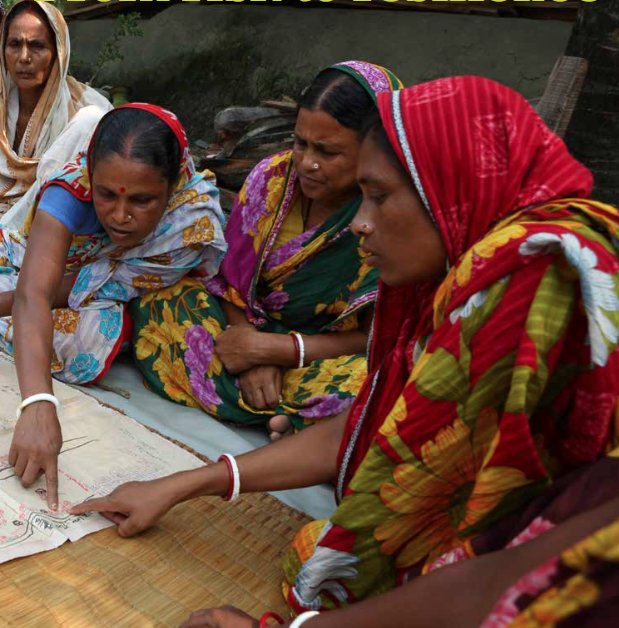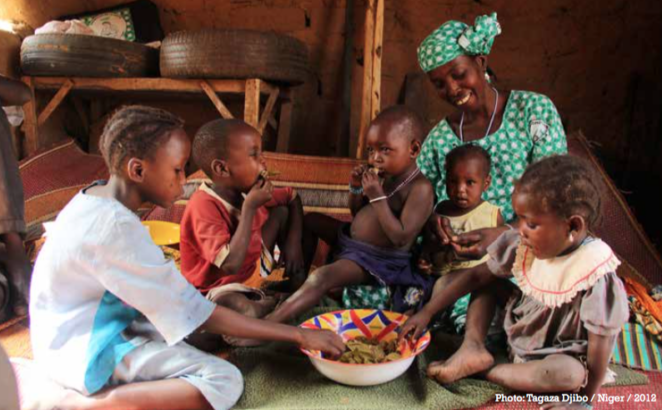From risk to resilience: making global policies count for the most vulnerable

From risk to resilience
The need for resilience has never been clearer. Climate change is driving an increase in the frequency and intensity of natural disasters around the world. Rising levels of malnutrition in parts of the Sahel, the Horn of Africa and Southern Africa, exacerbated by El Niño, are the latest spike in a pattern of recurring crises. As well as the risk of more high-profile disasters, the damage caused by low-intensity “everyday emergencies”, such as recurring small-scale floods or persistent animal disease, has a huge impact on people’s lives, eroding assets – like seeds and livestock – that help people withstand disasters.
So it was crucial that resilience featured prominently in three global policy frameworks agreed in 2015 (the Sendai Framework for Disaster Risk Reduction, the Sustainable Development Goals, the Paris Agreement on climate change) and that key commitments were made on resilience at the World Humanitarian Summit held in May 2016. But in a sense, recognising the importance of resilience is the easy bit. How these policy commitments are put into practice is less straightforward. Resilience is a complex concept and its prominence in 2015 global frameworks poses a whole new set of questions about how to translate policy commitments into real change for disaster-affected people. But with governments are looking to implement their commitments in this area, there are already things we can say.
Concern’s report*, From risk to resilience: making global policies count for the most vulnerable, identifies five broad principles for resilience building, which connect to the 2015 policy commitments, and provides recommendations as to how resilience can be built where it matters most: in disaster-affected communities.
The report draws on Concern’s programme experience in countries such as Chad, Somalia, Bangladesh and India to address some of the fundamental questions surrounding resilience-building, such as the role of disaster-affected people themselves as well as the humanitarian and development communities, and the importance of tackling inequality. It explores the importance of integrated programmes that address the variety of risks that people face and the connections between them. It also examines the importance of communication and coordination at all levels, from communities to national governments, to help vulnerable people benefit from early warning information.
Most of all, the report makes the case for stepping up to the challenge of delivering the post-2015 commitments on resilience – focusing political will and delivering resources where they are required. For unless we succeed in building the resilience of disaster-affected people, the wider aims of the 2015 global policy frameworks – to alleviate poverty and address some of the most significant threats facing people around the world – will not be achieved.
*Download the full report from the right-hand column. The principles, conclusions and recommendations are provided in brief below.

Principles for effective resilience building
The principles put forward in this report are as follows (each principle is discussed in detail in the report):
-
Putting disaster-affected people at the centre of resilience building efforts: Disasters are experienced at the local level and it is the people affected who generally have the clearest understanding of the particular risks they face.
-
Bridging the humanitarian and development divide:In order to build resilience effectively, the traditional distinction between long-term development work and rapid humanitarian response must be broken down.
-
Building capacity for Early Warning Early Action:Effective Early Warning Early Action (EWEA) represents a crucial component of building communities’ resilience, particularly in contexts of predictable or slow onset emergencies, such as climate disasters in the Sahel and Horn of Africa.
-
Taking an integrated approach to disaster risk management: It is the interaction of a dynamic array of social, environmental, political and economic factors that determines how a person or a community experiences disaster.
-
Tackling inequality to reduce vulnerability:Inequality is a key factor in causing or exacerbating vulnerability and an obstacle to building resilience.
Conclusion and Recommendations (abridged)
The coming years represent a key opportunity to reorient humanitarian and development activity in support of a resilience-building approach. The prominence of resilience among 2015 policy commitments reflects a consensus at the global level of its potential value. There is now a need for concerted action and investment on the part of implementing agencies, governments and donors to build on these positive examples, put policy commitments into practice, and provide the necessary additional funding to ensure that resilience building can be supported at scale. Below, we draw out recommendations for these key actors from across the five major themes discussed in this paper:
Implementing agencies should:
- Ensure that all interventions are community-centred by undertaking participatory risk analysis, building on disaster management skills and approaches already within communities, and strengthening community governance bodies.
- Streamline processes for consolidating community priorities, costing them and communicating them upwards to local, district and national governmental bodies.
- Develop flexible programmes which can switch rapidly between development, Disaster Risk Reduction, preparedness, early action and scaled-up interventions as needed.
- Support effective Early Warning Early Action systems by identifying and addressing community information needs and helping to improve capacity and information flow at all levels.
- Design multi-sectoral programmes where appropriate, or work in partnership with governmental or non- governmental actors to ensure a coordinated package of resilience interventions addressing the principal drivers of risk and vulnerability.
- Address vulnerability by identifying and addressing the specific needs of marginalised groups and ensuring their voices are included within governance bodies.
- Invest in and disseminate learning on all aspects of resilience programming to demonstrate what works best in which contexts.
- Advocate for changes in policy and systems where needed and build capacity at all levels to better assess and manage risk and reduce vulnerability.
Governments should:
At local and regional level:
- Strengthen connections with community governance bodies to ensure the views of vulnerable people are well represented within local and regional level resilience plans and budgets.
- Play a central coordinating role across all areas of resilience programming and governance including the organisation of risk analyses, collecting and sharing early warning information and managing response mechanisms.
- Strengthen local institutions and engage with traditional and religious leaders to implement progressive laws and strategies to address discrimination and tackle inequality.
At national level:
- Devolve sufficient power and resources to local and regional governments to help them fully address community perspectives and needs in their plans and budgets.
- Support and strengthen local and regional governance bodies to enable them to play a central coordinating role in areas of resilience programming and governance.
- Work with a range of actors, including civil society and forecasting institutions, to develop effective Early Warning Early Action systems, which are well resourced at all levels and can respond rapidly to mitigate the impact of an impending disaster.
- Encourage and facilitate a multi-sectoral approach, where appropriate, by coordinating plans and programmes across ministries and departments at all levels and evaluating national sectoral strategies and action plans using a disaster-proofing and resilience building lens.
- Develop progressive laws and strategies tackling inequality and safeguarding the rights of marginalised groups and resource and strengthen the capacity of local government institutions to implement these.
Donors should:
- Increase funding from Official Development Assistance for Disaster Risk Reduction and resilience.
- Allocate more funds for resilience from the development sector, particularly in areas such as supporting preparedness, establishing Early Warning Systems, addressing underlying vulnerabilities and strengthening local response functions.
- Deliver multi-year, flexible funding to enable programmes to switch quickly between the range of activities on the development-humanitarian continuum, and scale up activities from different sectors as necessary.
- Prioritise funding for resilience initiatives which address inequality and take into full consideration community needs and voices, no matter what level they are operating at.
- Support capacity-building for governance and Early Warning Early Action institutions, both for communities and government, and at micro, meso and macro levels.
- Agree basic criteria for releasing funds in response to early warnings, taking a ‘no regrets’ approach to prevent dangerous situations escalating into disasters, particularly in regions vulnerable to drought.
- Provide funding for research and learning to enhance understanding of which approaches work best in which contexts, including the cost-effectiveness of different strategies to reach the most vulnerable.

Suggested citation:
Concern Worldwide (2015) From risk to resilience: making global policies count for the most vulnerable. Concern Worldwide: London, UK. Sourced from: https://www.concern.net/en/resources/risk-resilience-making-global-policies-count-most-vulnerable
(0) Comments
There is no content